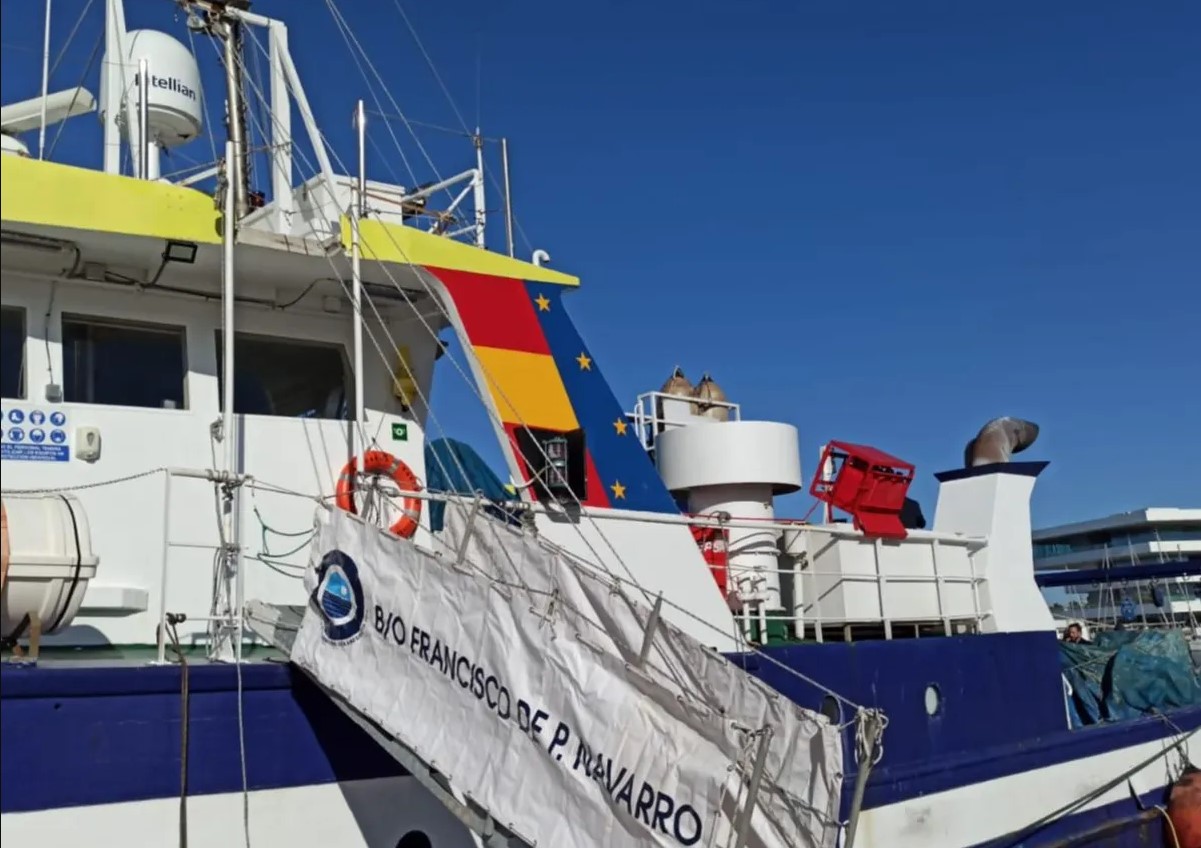The DANA floods of October 2024 were the result of an environmental catastrophe caused by an isolated cold drop or depression at high levelsbetter known as DANA, which began on the 29th in eastern Spain and affected several areas of eastern Spain, with particular severity in the Valencian Community.
DANA is a climate phenomenon that occurs when a mass of cold air is trapped and surrounded by an area of warm, moist air. Such interaction causes significant thunderstorms, torrential and persistent rains and very strong winds.
Evaluation of the impacts of DANA
The Minister of Science, Innovation and Universities, Diana Moranthas visited in the Port of Valencia, the ship Francisco de Paula Navarro of the Spanish Institute of Oceanography (IEO-CSIC)which on January 11 began an oceanographic campaign, called CON-DANA24, to evaluate the impact on the contamination of marine sediments as a consequence of the extraordinary terrigenous contributions that have been produced by DANA.


During the visit, Morant highlighted “the key role played by the Higher Scientific Research Council (CSIC) in emergency situations such as DANA, putting scientific evidence, research and scientific advice to help in the reconstruction.” The minister thanked researchers for their extraordinary efforts to respond to environmental emergencies and their commitment to protecting the marine environment.
The campaign will consist of take samples, for 10 days, of water at different depths and surface sediment using a box-corer dredge to determine the concentrations of organic and inorganic contaminants, and compare them with previous available data.


The IEO-CSIC has periodic studies of the chemical contamination of surface sediments, including trace metals, polycyclic aromatic hydrocarbons (PAHs), polychlorinated biphenyls (PCBs), organochlorine pesticides and polybromo-diphenyl ethers (PBDEs). Sampling will be carried out by the Murcia Oceanographic Center staff and the analyzes in the laboratories of the Marine Pollution research group of Murcia (organic pollutants) and Vigo (trace metals).
He The study area will cover the Gulf of Valencia, with special emphasis on the areas of influence of the mouths of the Turia and Júcar.as well as other areas of interest in the Levantine-Balearic demarcation. The campaign is part of the ESMARES3 research project, commissioned by the Ministry for the Ecological Transition and Demographic Challenge (MITECO) for the protection and monitoring of the marine environment.
The oceanographic vessel Francisco de Paula Navarro, with a length of 30.46 meters and capacity for 17 people, is designed for multidisciplinary research in coastal and oceanic waters. Its laboratories, equipped with advanced technology, will allow samples to be processed and stored in optimal conditions throughout the expedition.
Visiting Catarroja
The minister has also traveled to Catarroja to verify the practical application of a solution developed by the CSIC for the removal of mold on walls as a result of flooding of homes during DANA.
The solution consists of application of a mixture of alcohols and a fungicide product. The results obtained demonstrate the efficiency of the product for eliminating different types of mold and the permanence of the solution over time.
During the visit to a home affected by DANA, a CSIC research team has placed a support innovative designed for the elimination of moisture in walls. This is an experimental development that contains sodium polyacrylate supported on a nylon-coated absorbent material. This material has been placed on the wall as an experimental witness and will be monitored over time.
Morant has recognized the work of great scientists from public research centers to develop innovative solutions to the challenges that society needs. On both visits, the minister has been accompanied by the president of the CSIC, Heloísa del Pinoand the Government delegate in the Valencian Community, Pilar Bernabe. In Catarroja, the mayor of the municipality was also present, Lorena Silvent.
Help from the CSIC after DANA
On October 30, the CSIC activated the institution’s Advisory Group on Disasters and Emergencies (GADE) to offer and provide technical and scientific advice in response and reconstruction efforts after DANA. Since then, the CSIC has mobilized more than 150 people from thirty centers and institutes (of the 124 that are integrated into the institution) organized into 15 groups (floods, land movements, water, health risks, social risks, management waste, marine impact, infrastructure, geographic information systems, remote sensing, hydrogeology and pollution, among others).
The work carried out by the technical and research staff of the CSIC consists of both strict scientific advice (recommendations, analysis) and operational work on the ground (obtaining images with drones, seabed tracking with oceanographic vessels, impact on buildingssearch for places suitable for sludge collection).
Other actions currently being carried out by CSIC researchers are related to the taking soil samples from vehicle fields to measure contamination levels environmental or air quality analysis through mobile mobile equipment.

